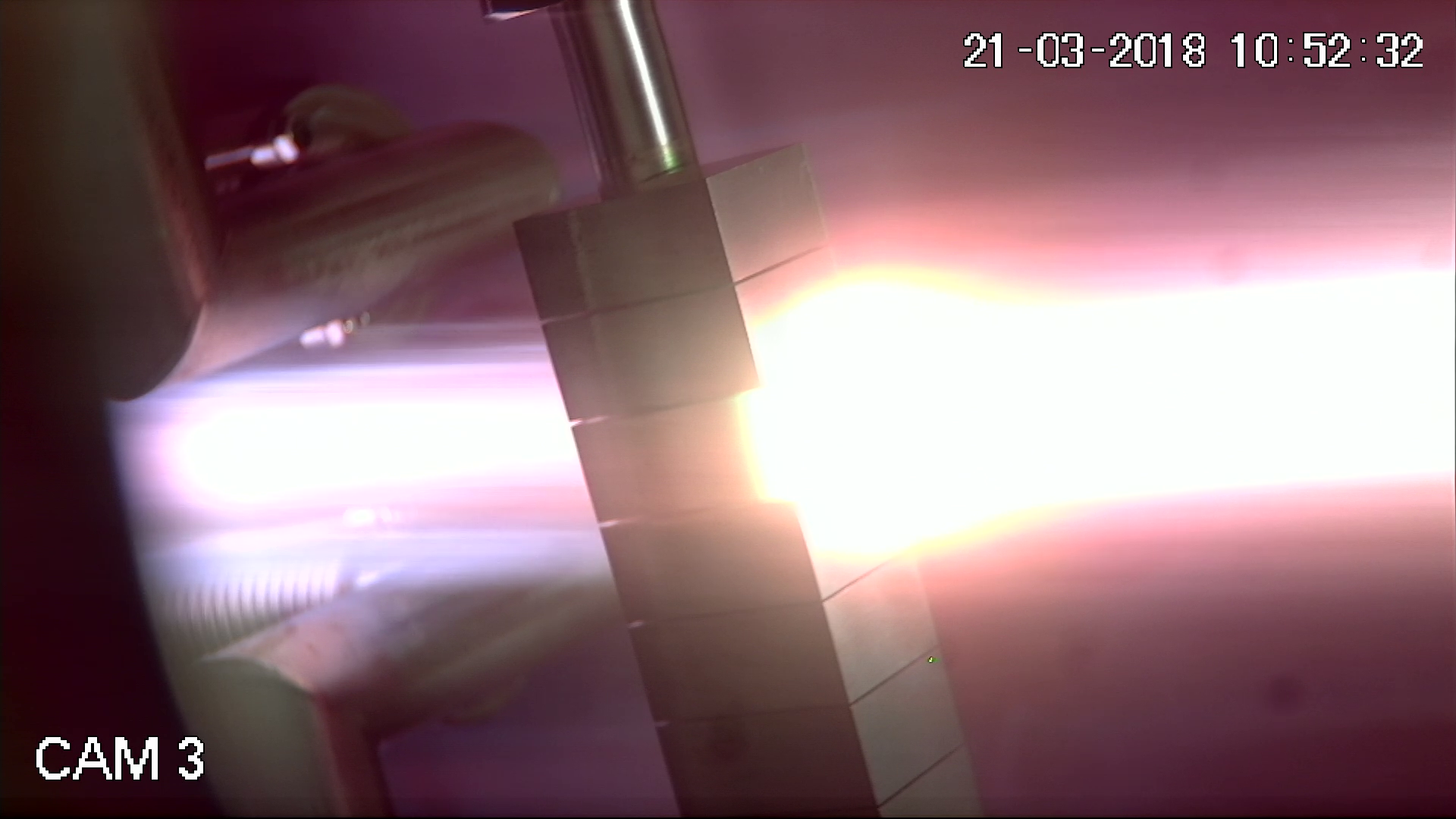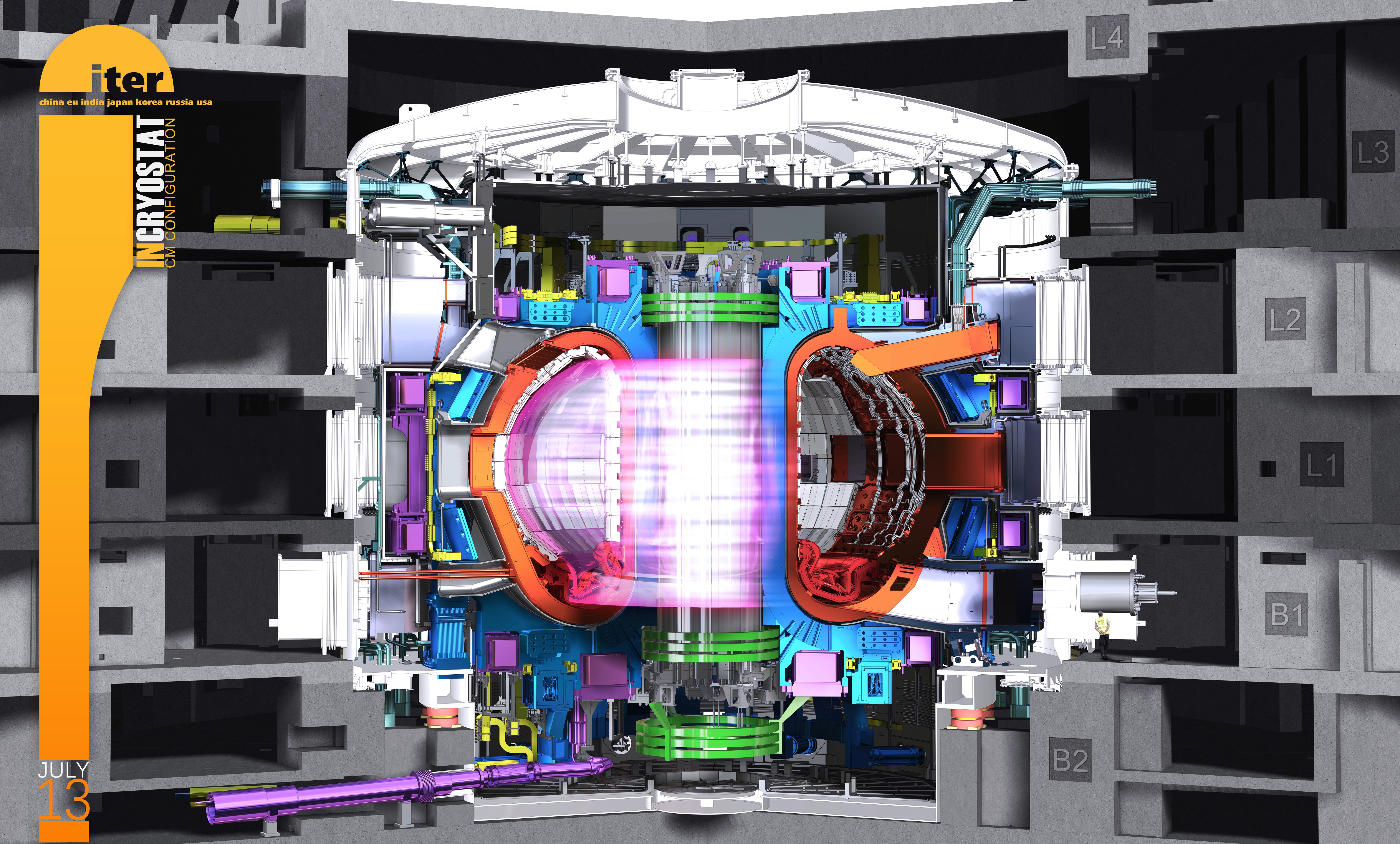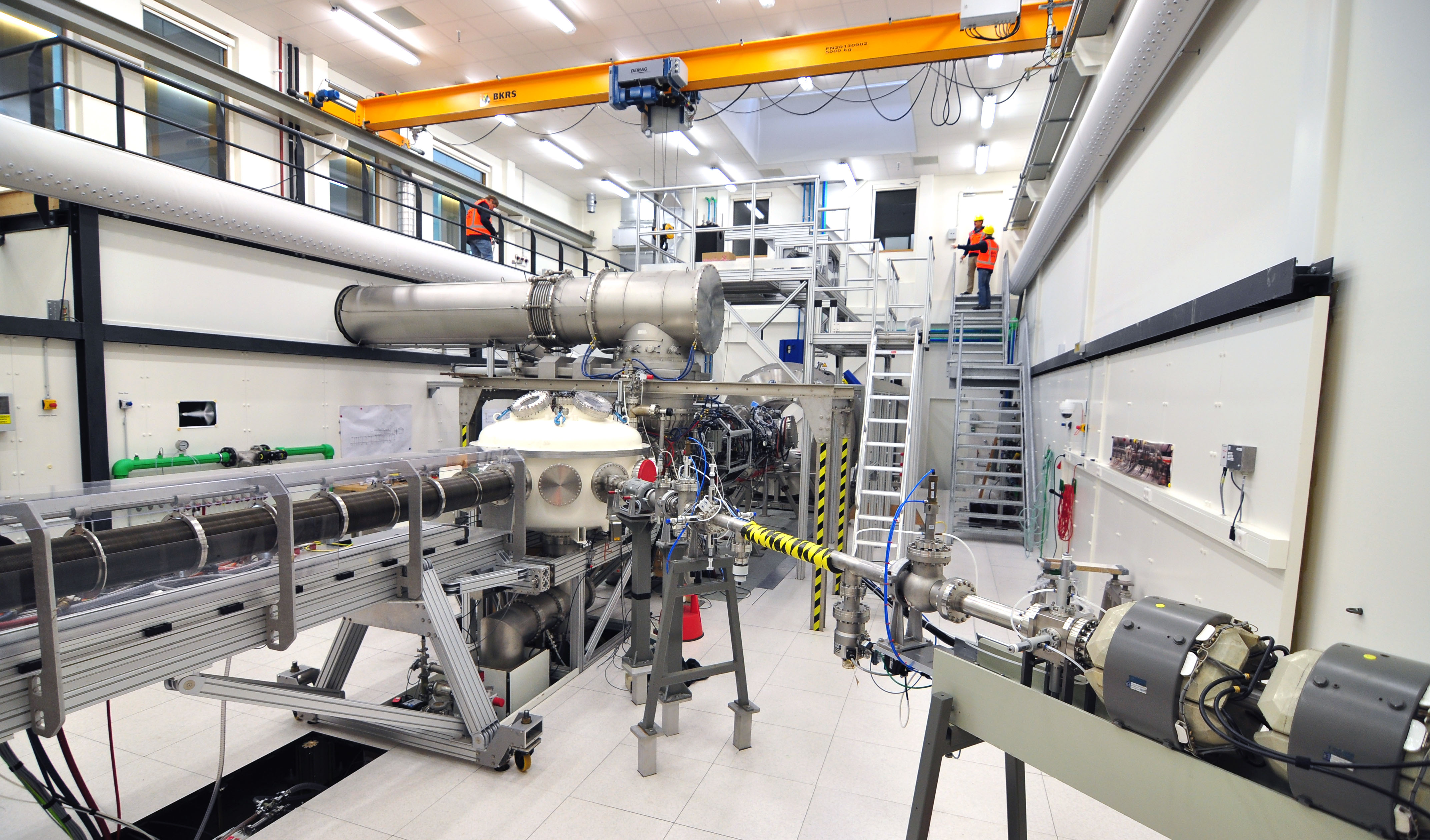On Wednesday 21 March, the research facility Magnum-PSI at DIFFER (Dutch Institute for Fundamental Energy Research) set a new world record for longest exposure of a material to the harsh plasma conditions in future fusion reactors. Magnum-PSI exposed tungsten wall components to the equivalent of a full year of high power fusion operations in the future ITER reactor, 50 times more than the previous record. The exposure took only 18 hours to complete and shows Magnum-PSI's unique capability to investigate how materials hold up under a sizeable part of their lifetime in ITER.
ITER fusion project
The international nuclear fusion project ITER is currently being constructed in the south of France and will start experiments in 2025. ITER is the first fusion experiment ever designed to produce more power from nuclear fusion reactions than is needed to heat and stabilize the hot, dense plasma (charged gas) in the reactor. Fusion researchers intend to use abundant fuels to mimic the nuclear reactions at the heart of the sun as a safe, clean and nearly inexhaustible energy source.

material exposed to intense plasma in Magnum-PSI.
copyright: DIFFER
Surface of the sun
Magnum-PSI is the only laboratory facility in the world which can reach the harsh plasma conditions expected in ITER's exhaust. These conditions are comparable to those in a welding flame, at a space craft's re-entry heat shield, or at the surface of the sun. Thanks to a superconducting magnet (operational since the start of 2017) Magnum-PSI can now maintain such a plasma for hours on end for truly long term tests of candidate materials.
"Very impressive"
Greg De Temmerman, ITER's Coordinating Scientist for plasma wall interactions, proposed and participated in the record experiment at Magnum-PSI and also provided the small scale realistic tungsten mock-ups for the experiment. "The fluence reached here (total particle impacts per surface area) is equivalent to that expected during a full year of high power fusion operations in ITER. That is very impressive - I am very pleased to see Magnum-PSI working so well." The previous record, at a different facility, exposed materials to an equivalent of 5 ITER days.

Facility manager Hans van Eck is proud of the new achievement: "This experiment was really a test of the facility; we'd never gone to such long exposures before. In only 18 hours since Monday morning 19 March, we exposed a set of tungsten blocks to a fluence of 1030 impacts of deuterium ions per square meter of material, at a power load of at least 10 million Watts per square meter." Deuterium is a heavier isotope of hydrogen and forms one half of the fusion fuel mix.
After the record discharge, it is now time to examine ITER's tungsten components to see how they held up under the exposure. Thomas Morgan, who heads DIFFER's research into plasma material interactions, looks forward to analyzing the results: "We will gain the first detailed look at how ITER's wall materials will evolve during their lifetime in the reactor, something no other experiment has been able to investigate."
Facility role: collaboration with ITER and EUROfusion
As a research facility, Magnum-PSI welcomes collaboration with researchers outside of DIFFER. The record plasma exposure was performed on behalf of the international ITER project and the European fusion development consortium EUROfusion.

This project has received funding from the Euratom research and training programme 2014-2018 under grant agreement No 633053.
Go to the News page.